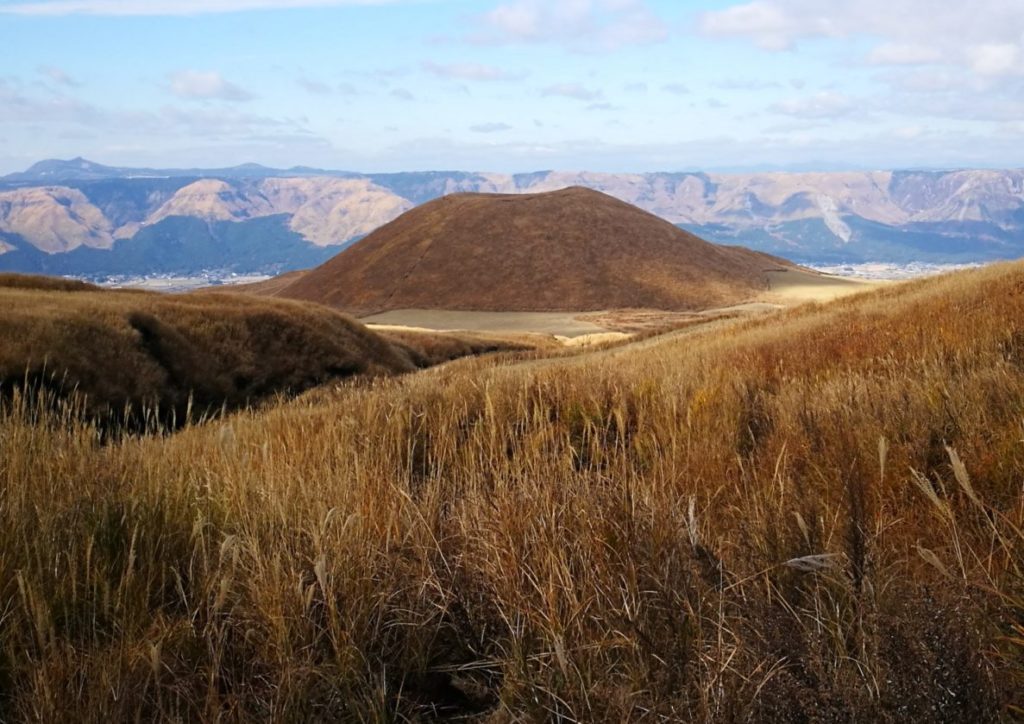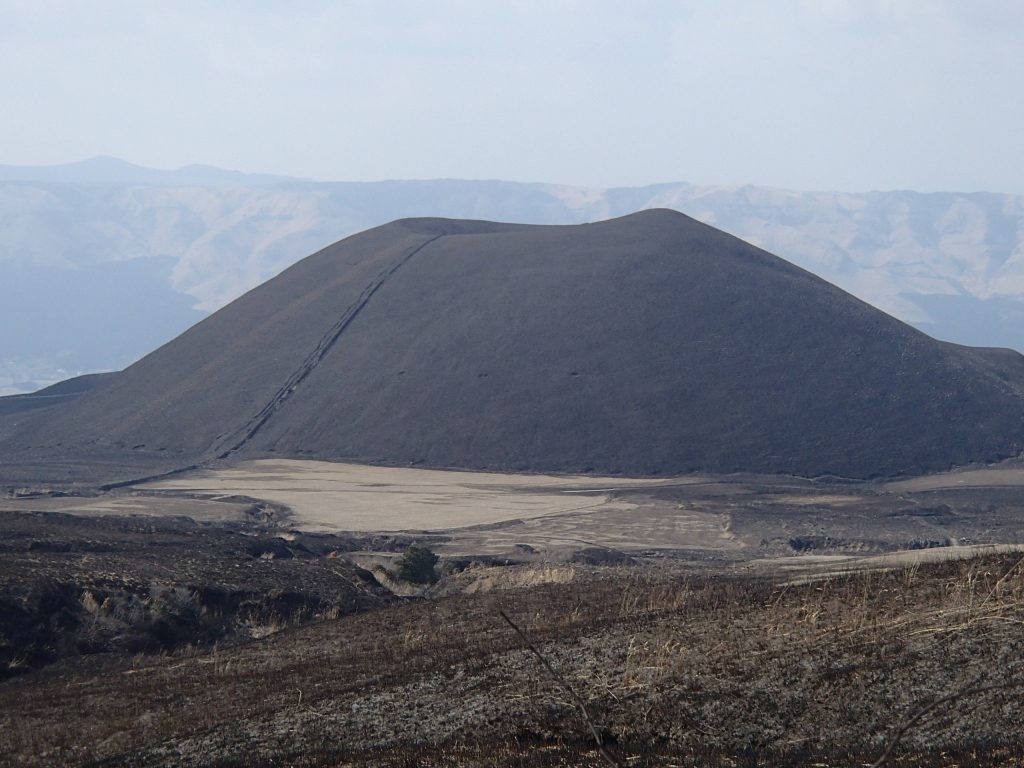
Noyaki - the burning of the grasslands
If you visit the Aso area in late February or March you might be surprised to find the lush green grasslands you saw in all the photos scorched and blackened. Don’t worry a war has not broken out it’s only the yearly Noyaki.
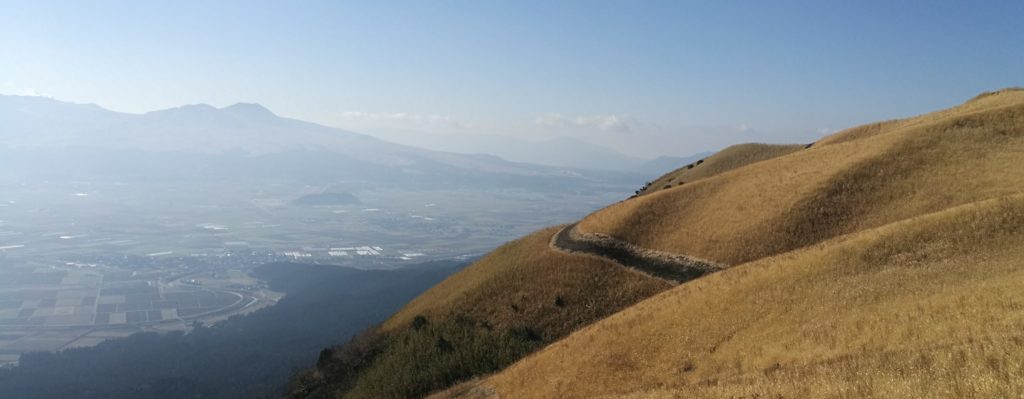
Noyaki season
Noyaki takes place from mid February to the end of March. With 22000 hectares of grass, it’s a huge task only made possible with the help of hundreds of trained volunteers. Volunteers also help in early autumn when over 500 km of fire breaks have to be cut in order to prevent the fires from spreading during Noyaki.

Why do the Aso people burn the grasslands?
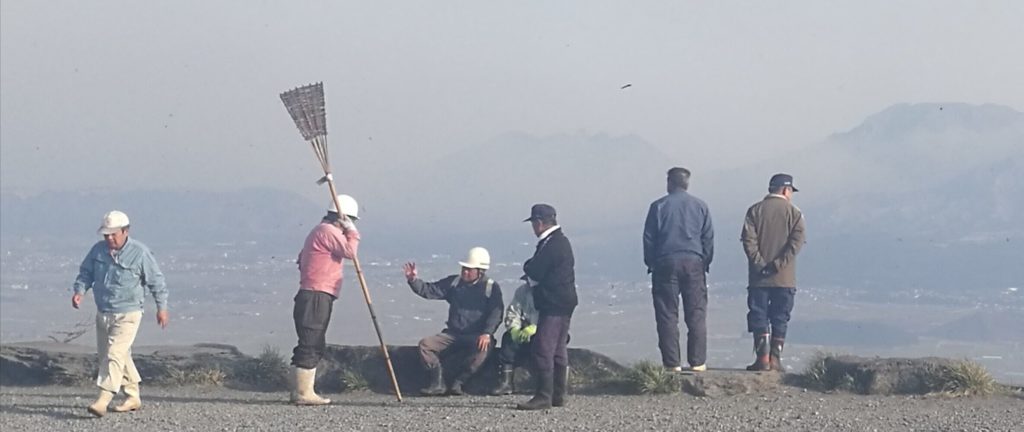
野焼きin Japanese is the name given to the process of the controlled burning of the grasslands of Aso. Grassland burning has been documented for over a 1000 years in and around the Aso caldera. The burning prevents shrubs and trees from taking over the land and so preserves the grasslands not only for the cattle and horses that graze there but also as a unique landscape for Aso’s many visitors.
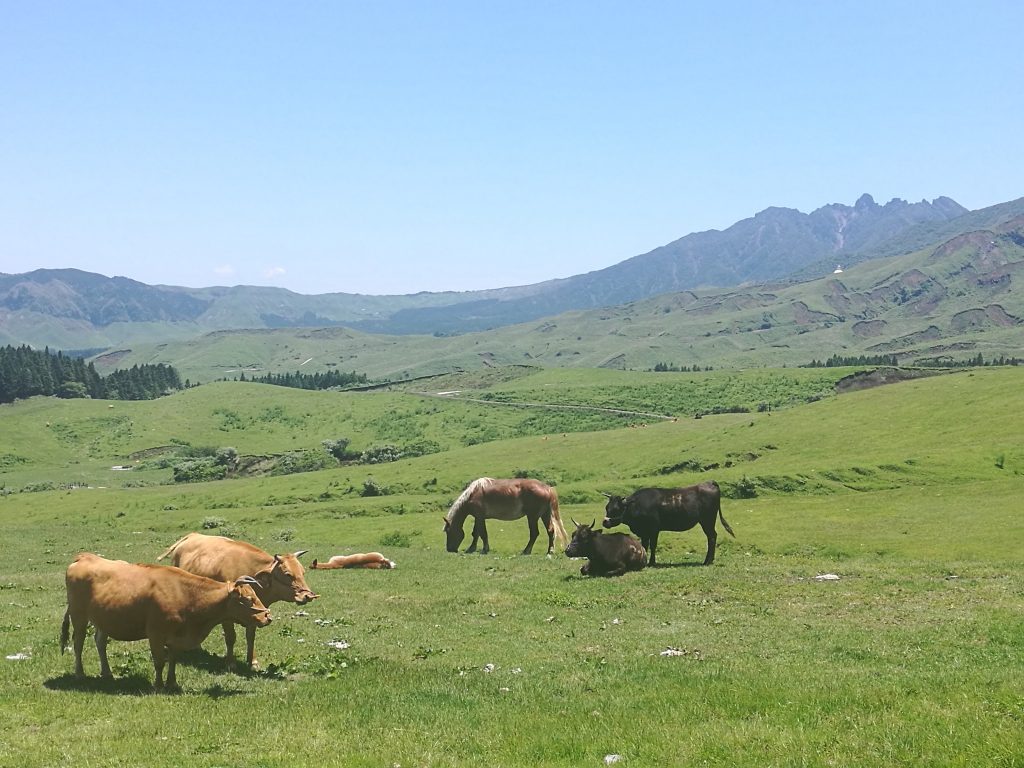
When does the grass recover?
By mid to late April the cattle and horses are back grazing the hillsides and Aso is starting to look green again. If you are heading to Aso during the burning season, don’t worry it is not dangerous and you will still find parts that are covered in golden susuki grass. The grass burning usually starts in central Mount Aso and spreads out to the outer caldera rim.

Noyaki Information
- Usually from mid February to mid March often at weekends
- Roads may be closed the day of the burning
- Grasslands are fully green again by mid to late April


